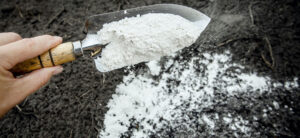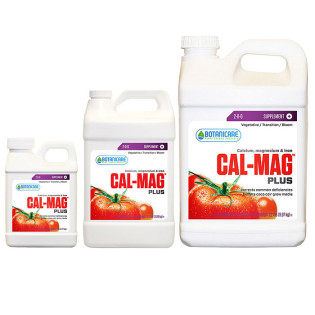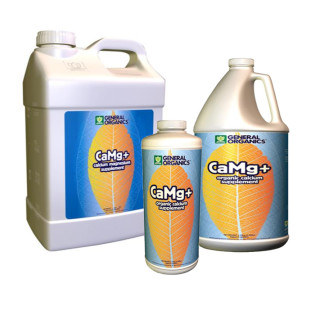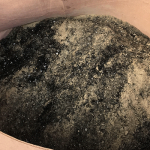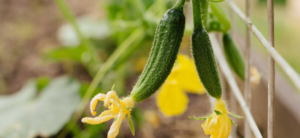
Are you curious about how to use dolomite for plants? By the end of this article, you’ll feel confident using this unique compound in the garden to balance out your soil.
It’s important to understand the exact needs of your plants. Although some plants, such as blueberries and azaleas, like acidic soil, most prefer for things to be more on the neutral side. That’s where dolomite lime for plants is so useful.
This common garden amendment is a limestone compound that contains both magnesium and calcium at ratios of 18 to 23% each. These elements not only can provide much-needed minerals to your soil but can also help raise the pH to make the soil more alkaline.
So when is dolomite for plants necessary - and how do you apply it? We’ll walk you through everything you need to know about using dolomite lime for plants.
What Is Dolomite Lime?

Dolomite lime is a specific type of limestone that can be used to supply necessary nutrients to plants and to raise the pH of the soil. Also referred to as calcium magnesium carbonate, it contains varying amounts of both calcium and magnesium.
When you purchase dolomite lime, it can be found in forms such as coarse or fine granules along with prills or pellets.
What’s the difference between lime and dolomite lime? It’s simple - dolomite lime contains extra magnesium. In some cases, dolomite lime also contains sodium, but usually at a ratio of 2% or less. This shouldn’t be enough to affect your plants in any way.
What Does Dolomite Do For Plants?
Dolomite lime is a helpful addition if you suspect that you have overly acidic soil.
Of course, this is something that should always be confirmed with a basic soil pH test. You can purchase one of these tests to conduct yourself at home or have a sample sent to your local cooperative extension if you aren’t sure.
Most plants grow best at a pH of 6.0 to 7.4 - neutral. If the soil is lower than 5.9, dolomite lime can be used to elevate the pH so that it is a bit more alkaline and amenable to healthy plant growth.
While neutral soil is preferred by most plants, soil pH occasionally can veer more into the acidic or more alkaline territory. When this happens, the conditions become less favorable for plants to grow, with an inappropriate pH often inhibiting their ability to uptake valuable nutrients.
Adjusting Soil pH
Soil pH can be changed in several ways, most of them without you ever knowing about it. It can be changed by a loss of organic matter or by the removal of various soil minerals when plants are harvested. Erosion can lead to a swing in pH, as can the use of sulfur and nitrogen fertilizers (both of which lower pH over time).
Adding dolomite lime can raise the pH back up so that it is not quite as acidic. When plants are grown in soil that is too acidic for their needs, they can suffer from deficiencies in critical nutrients like phosphorous, magnesium, potassium, molybdenum, and calcium.
These deficiencies can cause the growth of your plants to become stunted or for fruits to form/ripen poorly - and it can even kill them outright.
Therefore, rectifying low pH with dolomite lime is a smart choice. Plus, this amendment offers another benefit to gardeners - it supplies both magnesium and calcium. If you don't want to spend the money on a cal-mag supplement, this is a great alternative.
Which Plants Like Dolomite?
You can use dolomite lime on any plants that require neutral soil, as this amendment can be used to fix acidic soil. If your soil is already more on the neutral side, you can add it for plants that prefer alkaline soil.
For example, alkaline soil is preferred by plants such as lilacs, photinias, asparagus, beets, and brussels sprouts.
You can also use dolomite lime when a bit more calcium and magnesium are in demand. Certain fruits and vegetables, such as tomatoes, require more calcium as they grow. Dolomite lime will provide both calcium and magnesium, making it beneficial for other vegetables like parsnips, onions, beans, and garlic, too.
Even fruit trees like apple trees benefit from the addition of dolomite lime, which will make it easier for them to set and ripen abundant fruits.
There are some plants that don’t benefit quite as much from dolomite lime, too. Try not to add this amendment if you are growing plants that prefer acidic soil, such as Japanese maples, magnolias, rhododendrons, and grapes. Raspberries and strawberries aren’t fond of alkaline soil, either, so dolomite lime might not be a good fit for them.
How Do You Use Dolomite For Plants?

Timing is everything when it comes to applying dolomite in the garden. Technically, you can apply this product to your garden or yard at any time there is no frost, snow cover, or freezing temperatures. However, spring and fall tend to be best so that your plants can receive the maximum benefit.
Ideally, you should choose a clear day on which to apply your dolomite lime. Although it’s absorbed relatively quickly into the soil, applying on a clear day will reduce the likelihood of the dolomite lime running off before it is absorbed.
How To Use Dolomite As An Added Boost Of Calcium & Magnesium
If you’re adding dolomite lime for the benefit of added calcium and magnesium, you should apply it around two to three weeks before planting. This will give the compound enough time to break down in the soil to give your plants the boost they need. You’re also free to add more once the plants have been planted, too.
To apply dolomite lime, mix it liberally into the top six inches of soil.
Adding Dolomite Lime To Adjust Soil pH
If your goal is to change the pH of the soil, calculate how much you need ahead of time.
Generally, if the soil has a pH of 5.5 and you want to raise it by one point, getting it closer to 6.5, you will add 5 pounds of dolomite lime for every 100 square feet of space. You can do the math to figure out how much to add in other situations, too.
If you need to add much more than five pounds, however, it’s a good idea to spread the applications out throughout the growing season. That way, you won’t have to worry about burning the plants with an excess of nutrients.
Always Test Your Soil Before Applying Any Product!
Again, it’s important to actually conduct a soil test (testing for both pH and nutrient content) before you add dolomite lime to the garden.
If your soil has plenty of calcium and magnesium and already has a neutral to alkaline pH, adding dolomite lime won’t do you any good - and can actually do more harm than good.
Knowledge is power when it comes to applying dolomite lime!
Final Thoughts On Dolomite Lime For Plants
If you’re ready to give dolomite for plants in your garden a try today, don’t waste any more time. You can shop for this essential limestone compound, along with many other garden amendments, nutrients, products, and supplies at Hydrobuilder.
Don’t forget to pick up a pH meter and soil test kit before you add your dolomite lime, too - that way, you will know for sure if this amendment is actually needed.
Want to learn more about how to amend your soil? Or how to test pH? We have a myriad of helpful resources for all things growing, right here in our blog.
Get your soil ready for planting and add some dolomite lime to acidic soils - your plants will be much healthier for the minimal effort required!





